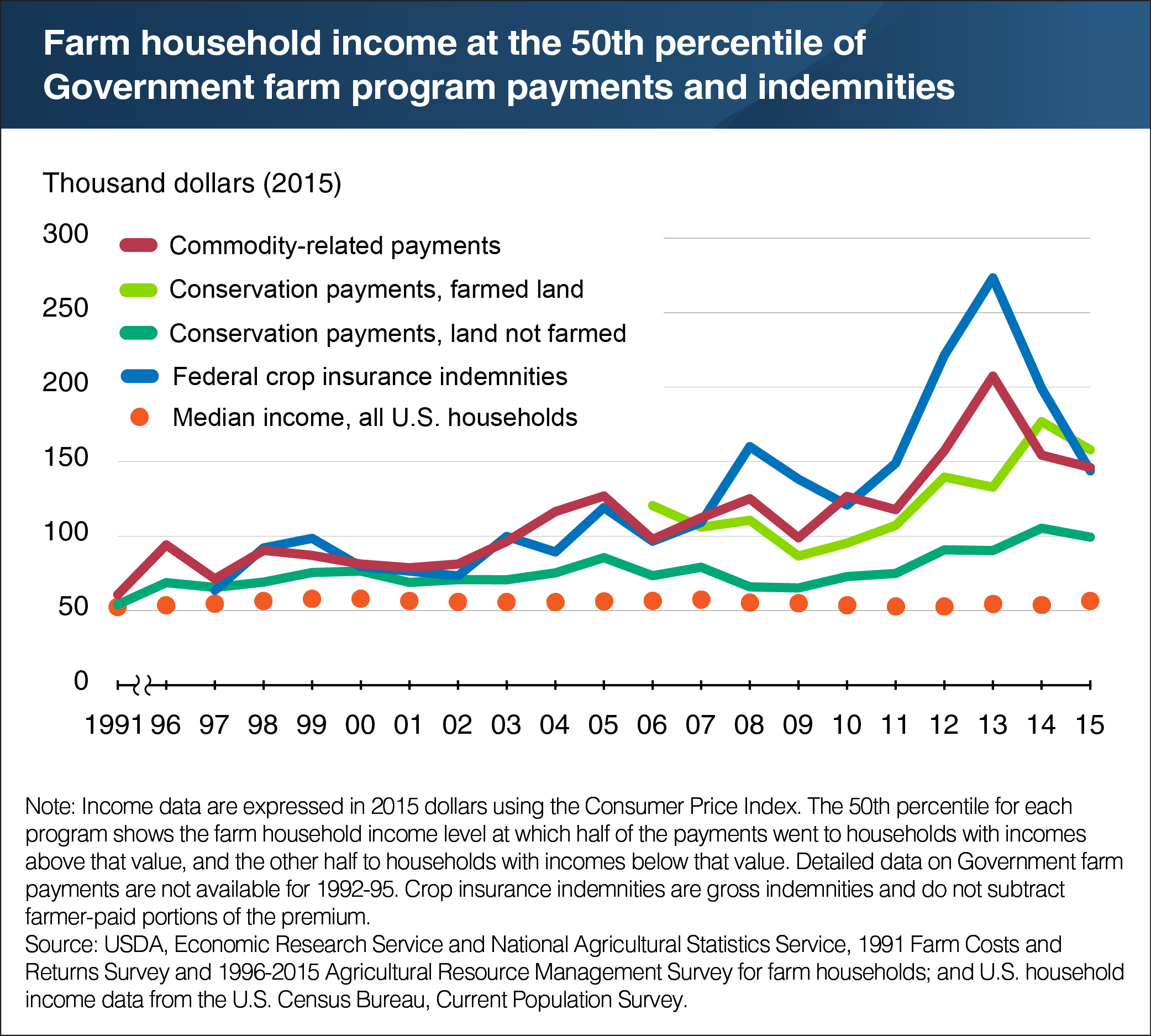Payments from Government farm programs have shifted to higher-income farm households to varying degrees, but with declines in some since 2013
- by Jonathan McFadden
- 12/1/2017

USDA’s commodity, Federal crop insurance, and conservation programs provided about $16.9 billion in financial assistance to farm producers and landowners in 2015. Over time, as agricultural production shifted to larger farms, these programs’ payments shifted to higher-income households—which often operate larger farms. In 1991, half of commodity program payments went to farms operated by households with incomes over $60,717 (adjusted for inflation). By 2015, this midpoint value, at which half of payments went to households with higher incomes, was $146,126. Similar trends hold for other programs, though with variability across programs and over time. For example, the midpoint income level for crop insurance indemnity payments increased from 2010 to 2013, but by 2015 had dropped below the 2008 level, to $143,806. For context, the median U.S. household income shows little change over the period and in 2015 was $56,516. Payments from commodity programs reduce financial risks to specific commodity producers, while payments from federally subsidized crop insurance mitigate yield and revenue risks. Payments from conservation programs aim to conserve natural resources and reduce environmental impacts from farming. This chart appears in the ERS report The Evolving Distribution of Payments from Commodity, Conservation, and Federal Crop Insurance Programs, released November 2017.

